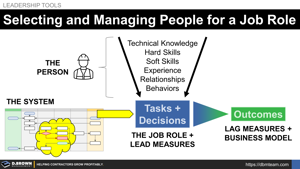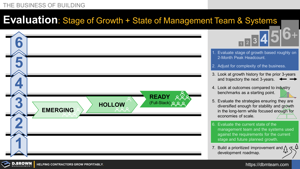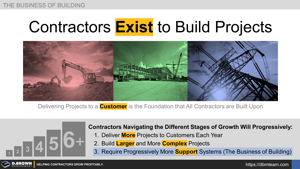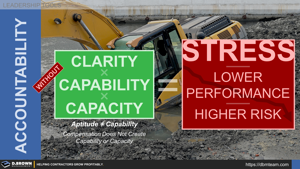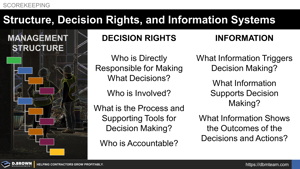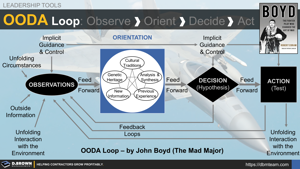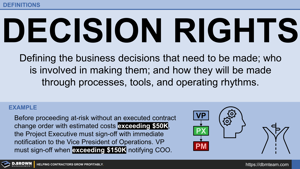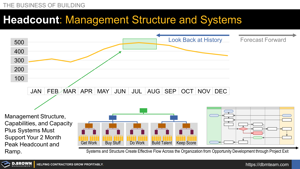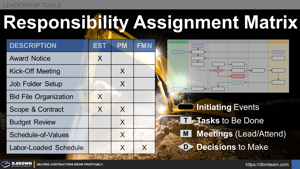Selecting and Managing People for a Job Role
A job role is a collection of related tasks and decisions to achieve a set of outcomes. A person brings a wide range of desires, skills, and experience to that job role. Aligning these is the discipline of management.
Organizational Development talentEvaluation: Stage of Growth + State of Management Team & Systems
Management teams and systems develop through three phases at each stage of growth. Use these 7 steps to evaluate where your team is at.
business management career talentContractors Exist to Build Projects - The Business of Building
Contractors exist to build projects. Delivering projects to a customer is the foundation all contractors are built upon. The business of building is about continually delivering more projects that are progressively larger and more complex.
business management strategy talentAccountability Prerequisites
Accountability in a job role is critical for contractors to grow. Accountability without clarity, capability, and capacity only leads to stress, lower performance, and higher risk over time.
business management Organizational Development talentCranes and a Construction Business
There is a lot of intentionality around all aspects of every crane lift, including systems for double-checking and approvals. There is far less intentionality around the business equivalents for contractors and that dramatically impacts performance.
business management talentStructure, Decision Rights, and Information Systems
Alignment of strategy, management structure, decision rights, and information systems creates consistently good outcomes for growing contractors and faster development of talent.
business management Organizational Development scoreboard talentObserve, Orient, Decide, and Act (The OODA Loop)
The OODA Loop is a decision-making framework originally developed for the military to make agility a competitive advantage. The focus on fast, localized decisions in rapidly changing environments aligns well with construction projects and businesses.
management strategy talentDefinition - Decision Rights
Decision Rights define the business decisions that need to be made, who is involved in making them, and how they will be made through processes, tools, and operating rhythms.
Organizational Development talentHeadcount, Management Structure, and Systems
Your management structure and systems must be able to support your forecasted 2-month peak headcount, including the ramp-up to that peak.
growth management talentResponsibility Assignment Matrix (RAM) and Contractor Growth
A responsibility matrix is a simple but powerful tool for helping everyone on a project and in the company see who is responsible for what. With a few added columns, it can easily indicate when, what tools, and link to the "how-to" procedures.
business management talent Talent Value Stream (TVS)